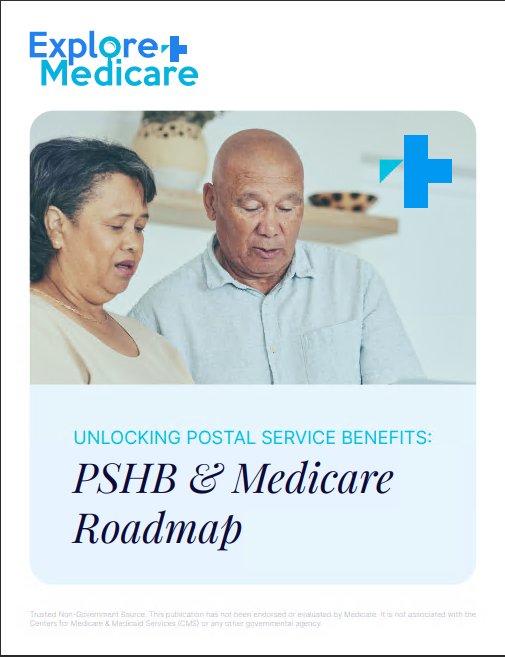Key Takeaways
-
Missteps during Medicare Open Enrollment can lead to higher costs and coverage gaps.
-
Understanding your options and avoiding common errors ensures you make the most of your benefits.
Avoiding Costly Medicare Enrollment Pitfalls
Medicare Open Enrollment happens once a year, and it’s your chance to fine-tune your healthcare coverage. The decisions you make now impact your health expenses and access to care for the year ahead. While it’s a critical period, many beneficiaries make mistakes that could cost them money or limit their coverage. Let’s look at seven common mistakes and how to sidestep them.
1. Ignoring the Open Enrollment Period Timeline
The Medicare Open Enrollment Period runs from October 15 to December 7 every year. Missing this window means you’ll have to stick with your current plan unless you qualify for a Special Enrollment Period (SEP).
Why This Matters:
Failing to review and update your plan could leave you with a policy that no longer meets your needs or costs more than necessary. Changes you make during this period take effect on January 1 of the following year.
How to Avoid This Mistake:
-
Set reminders: Mark the start and end dates on your calendar. Use smartphone alerts to stay on track.
-
Review your Annual Notice of Change (ANOC) letter, which outlines updates to your plan for the upcoming year.
2. Overlooking Changes to Your Current Plan
Your current plan might seem fine, but each year plans can change their premiums, deductibles, covered services, and provider networks. Assuming nothing has changed can result in unexpected costs or limited access to healthcare providers.
Why This Matters:
Ignoring plan changes might mean higher out-of-pocket costs or losing access to preferred doctors and medications.
How to Avoid This Mistake:
-
Review the ANOC carefully. Pay close attention to:
-
Premium and deductible adjustments.
-
Changes to prescription drug formularies.
-
Provider network updates.
-
3. Focusing Only on Premium Costs
It’s tempting to choose a plan based on the monthly premium alone. While premiums are important, they’re just one part of the total cost of a Medicare plan.
Why This Matters:
Plans with low premiums often come with higher deductibles, copayments, or coinsurance. You might also face higher costs for prescription drugs or out-of-network care.
How to Avoid This Mistake:
-
Calculate the total cost of the plan, including:
-
Deductibles.
-
Coinsurance and copayments.
-
Prescription drug costs.
-
-
Consider your healthcare usage. If you see specialists frequently or take multiple medications, a plan with a higher premium but lower out-of-pocket costs may save you money overall.
4. Skipping Prescription Drug Plan Reviews
Medicare Part D plans change their formularies—the list of covered drugs—every year. Skipping a review of your prescription drug plan could lead to higher costs or losing coverage for medications you rely on.
Why This Matters:
If a medication you need is no longer covered or is moved to a higher-cost tier, you could face significant expenses.
How to Avoid This Mistake:
-
Use Medicare’s Plan Finder Tool to compare Part D plans in your area.
-
Check:
-
Coverage for all your current prescriptions.
-
Costs for each medication under different plans.
-
Preferred pharmacy options for potential savings.
-
5. Ignoring Medicare Advantage Plan Changes
If you’re enrolled in a Medicare Advantage (Part C) plan, it’s crucial to review changes in benefits, provider networks, and out-of-pocket limits. Plans can adjust coverage for supplemental benefits like dental, vision, and hearing services.
Why This Matters:
Provider networks can shrink, and supplemental benefits can be reduced or eliminated. You could also face higher out-of-pocket costs if you don’t switch to a better-suited plan.
How to Avoid This Mistake:
-
Compare Medicare Advantage plans annually to ensure your current plan remains the best fit.
-
Review:
-
Maximum out-of-pocket (MOOP) limits.
-
Availability of supplemental benefits.
-
Changes to in-network providers and facilities.
-
6. Not Considering Medicare Supplement Plans (Medigap)
For those enrolled in Original Medicare, Medigap policies can help cover out-of-pocket costs like copayments, coinsurance, and deductibles. However, you might overlook this option entirely or fail to switch to a more suitable policy.
Why This Matters:
Staying with an unsuitable Medigap plan or not having one at all can lead to high medical bills, especially if you need frequent healthcare services.
How to Avoid This Mistake:
-
Evaluate whether your current Medigap plan meets your needs.
-
Use Open Enrollment to research available Medigap policies if you’re eligible.
7. Failing to Seek Expert Assistance
Navigating Medicare can feel overwhelming, especially with so many options and changes to consider. Going it alone might cause you to miss better coverage or savings opportunities.
Why This Matters:
Without expert guidance, you could end up in a plan that doesn’t suit your needs, leading to unnecessary expenses or limited access to care.
How to Avoid This Mistake:
-
Reach out to Medicare counselors through your local State Health Insurance Assistance Program (SHIP).
-
Consult trusted resources to clarify coverage, costs, and enrollment options.
-
Contact Medicare directly for official guidance.
Stay Ahead During Open Enrollment
Medicare Open Enrollment is a valuable opportunity to optimize your healthcare coverage, but it’s not without its challenges. By avoiding these seven common mistakes, you can make informed decisions that protect your health and finances for the year ahead. Remember, the key is preparation: mark your calendar, review plan changes, and seek help when needed.









